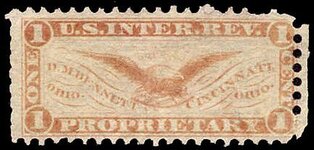muddpuppy
Sr. Member
- Jun 20, 2011
- 263
- 804
- Detector(s) used
- AT PRO, Bounty Hunter Quick Draw II
- Primary Interest:
- All Treasure Hunting
HI all. I have been sorting and cleaning my finds and have yet to share this awesome find. Pictured is a CW store card from "DR. BENNETTS MEDICINES CURE SICKNESS AND PAIN" (front) shield surrounded by wreath (back).
During the Civil War (1861-65) the public hoarded all the government issued coins for their bullion value (even the lowly cents). Merchants had to make change with postage stamps, paper script, and private tokens like this one.
This Civil War Token, Fuld Lists It As An OH165N-9a. It was struck for DR. Bennett's, pharmaceutical manufacturer, in Cincinnati, Ohio. There are only a handful of Civil War pharmaceutical medicines and makers in the entire store-card series. DR. Bennett's was one of the first of the patent medicine makers in the United States.
Thanks for looking an Keep Swinging!!
During the Civil War (1861-65) the public hoarded all the government issued coins for their bullion value (even the lowly cents). Merchants had to make change with postage stamps, paper script, and private tokens like this one.
This Civil War Token, Fuld Lists It As An OH165N-9a. It was struck for DR. Bennett's, pharmaceutical manufacturer, in Cincinnati, Ohio. There are only a handful of Civil War pharmaceutical medicines and makers in the entire store-card series. DR. Bennett's was one of the first of the patent medicine makers in the United States.
Thanks for looking an Keep Swinging!!
Amazon Forum Fav 👍
Attachments
Upvote
9






 did not know that ........
did not know that ........

